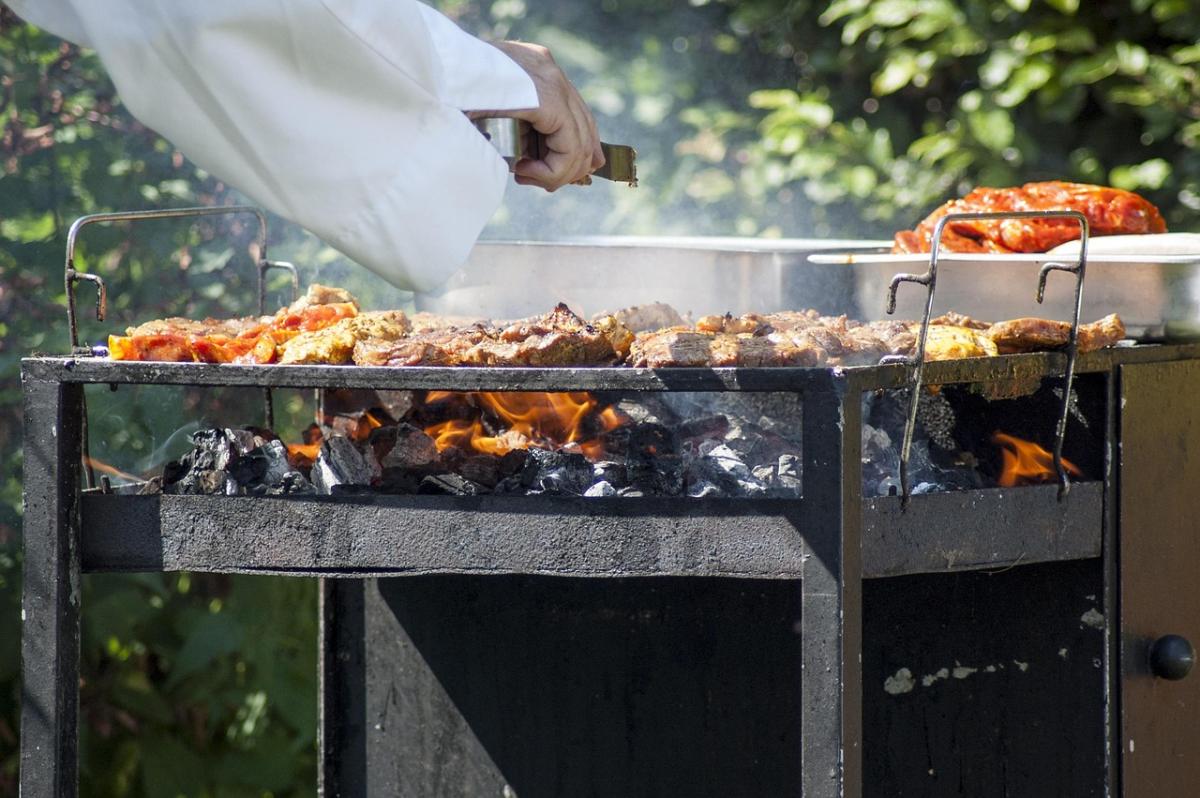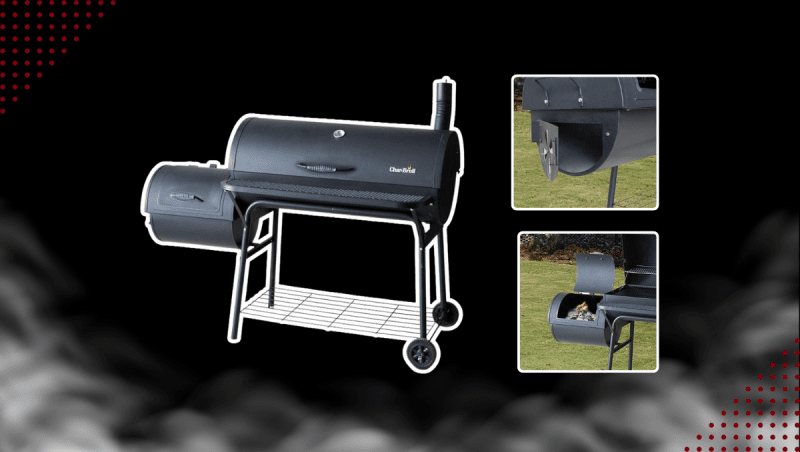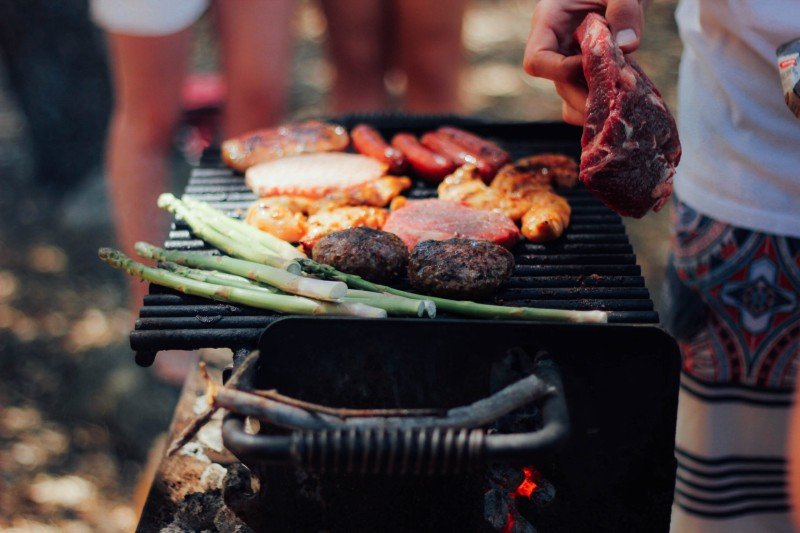The History and Evolution of Barbecue Grills: From Campfires to Modern Innovations
Barbecue grills, an integral part of our modern outdoor cooking experience, have a rich and fascinating history that traces back to ancient times. From humble campfires to sophisticated modern innovations, the evolution of barbecue grills is a testament to our love for good food and communal gatherings.
Early Origins
The origins of barbecue grills can be traced back thousands of years to the time when our ancestors first discovered the benefits of cooking food over an open flame. The early humans used sharpened sticks to skewer meat and cook it over campfires. This simple method not only provided a means to cook food but also brought people together to share and enjoy meals.
As civilizations developed, so did their cooking techniques. The Ancient Greeks and Romans built simple pits or hearths specifically designed for cooking meat. They used metal spits to roast large quantities of meat, often for celebratory feasts or religious ceremonies. These early advancements set the stage for the future evolution of barbecue grills.
The Advent of the Modern Barbecue
The 18th and 19th centuries witnessed significant developments in barbecue grilling. The Industrial Revolution led to the creation of cast iron and steel, materials that revolutionized cooking methods. Metal grates and adjustable grates were introduced, allowing for better control of heat and easier cooking. The first makeshift brick barbecue pits also emerged during this time.
However, it was in the United States, particularly in the southern states, that barbecuing gained immense popularity. The Native Americans had long used smoking techniques to preserve and flavor their food, which colonial settlers learned and incorporated into their own cooking methods. Soon, the tradition of outdoor barbecuing became deeply ingrained in American culture.
The Rise of Charcoal and Gas Grills
Charcoal grills became the next major innovation in barbecue technology. In the early 20th century, Henry Ford and Thomas Edison played pivotal roles in popularizing charcoal grilling. Ford's mass production of automobiles produced large amounts of scrap wood, which he cleverly re-purposed into charcoal briquettes. Thomas Edison's contribution came in the form of a portable electric starter, which made lighting the briquettes a breeze.
As America moved into the post-World War II era, gas grills gained prominence. The convenience of gas grills, which allowed for easy ignition and precise temperature control, revolutionized the way people cooked outdoors. Gas grills offered a clean and efficient alternative to traditional charcoal grills, making them popular among urban dwellers and individuals seeking a quick and convenient grilling experience.
Modern Innovations
In recent years, grilling technology has continued to evolve, incorporating sophisticated features to enhance the cooking experience. Today, we find a wide range of innovative barbecue grills, including infrared grills, pellet grills, and even smart grills that can be controlled remotely using smartphones. These advancements have made outdoor cooking more precise, efficient, and enjoyable.
Additionally, the demand for environmentally friendly grilling options has led to the rise of electric grills that produce less smoke and reduce carbon emissions. This trend reflects our growing awareness of the importance of sustainability and the desire to reduce our impact on the environment while still enjoying the pleasures of barbecuing.
The history of barbecue grills is a testament to human creativity, innovation, and our desire to gather together and enjoy delicious food. From the simplicity of roasting meat over an open fire to the high-tech, feature-filled grills of today, the evolution of barbecue grills has stood the test of time, and it will undoubtedly continue to progress in the future.
Choosing the Perfect Barbecue Grill: Factors to Consider and Types Available
When it comes to outdoor cooking and enjoying delicious barbecue meals, a high-quality grill is an absolute necessity. However, with so many options available in the market, it can be overwhelming to select the perfect barbecue grill for your needs. To help you make an informed decision, we have outlined a few key factors to consider and the different types of barbecue grills available.
Factors to Consider
1. Cooking Area: The first factor to consider is the size of the cooking area. Think about how many people you typically cook for or if you often host large gatherings. A larger cooking area is preferable for those who frequently entertain guests.
2. Fuel Type: Barbecue grills can be powered by different fuel types, including charcoal, gas, and electric. Each fuel type comes with its own set of advantages and disadvantages. Charcoal grills are known for imparting a distinct smoky flavor, while gas grills offer convenience and easy temperature control. Electric grills are popular for their simplicity and versatility, making them suitable for both indoor and outdoor use.
3. Construction and Durability: Look for grills made from durable materials such as stainless steel or cast iron. These materials ensure longevity and can withstand high temperatures while maintaining their structural integrity. Additionally, check for quality reinforcements and solid construction for added durability.
4. Heat Control: A grill with good heat control is essential to achieve perfectly cooked meals. Consider grills with adjustable burners or dampers to regulate the heat levels effectively. This feature allows you to sear meat at high temperatures or cook delicate foods at lower temperatures.
5. Cleaning and Maintenance: Opt for grills that are easy to clean and maintain, as this will save you both time and effort. Features such as removable grates, ash drawers, and grease management systems simplify the cleaning process and prevent the accumulation of debris.
Types of Barbecue Grills
1. Charcoal Grills: Charcoal grills are the traditional choice and are favored by barbecue enthusiasts for their smoky flavor. These grills use briquettes or lump charcoal as fuel, requiring proper lighting and attentive temperature control. They come in various shapes and sizes, including kettle grills, barrel grills, and ceramic kamado-style grills.
2. Gas Grills: Gas grills use propane or natural gas as fuel, providing consistent heat and rapid ignition. They are popular for their convenience and ease of use, featuring multiple burners for different cooking zones and temperature settings. Gas grills come in various sizes and offer additional features like side burners and rotisserie kits.
3. Electric Grills: Electric grills are a great option for those who prefer simplicity and ease of use. They require an electrical outlet and provide even heat distribution, eliminating the need for fuel or charcoal. Electric grills are suitable for both indoor and outdoor use, making them an excellent choice for apartment balconies or small patios.
By considering these factors and understanding the types of barbecue grills available, you can find the perfect grill that suits your cooking preferences and lifestyle. Remember, investing in a high-quality grill will enhance your outdoor cooking experience and allow you to create memorable meals for years to come.
Barbecue Grill Techniques and Tips: Mastering the Art of Grilling for Perfectly Cooked Meals
Barbecuing is not just a cooking technique; it's an art form that requires skill, patience, and a good understanding of different grilling techniques. Whether you're a novice griller or an experienced pitmaster, mastering the art of grilling can take your barbecue game to a whole new level. In this article, we will explore some essential barbecue grill techniques and tips that will help you achieve perfectly cooked meals every time.
1. Preparing the Grill:
Before firing up your grill, it's crucial to ensure that it is clean and properly prepared. Start by removing any leftover ash or debris from previous grilling sessions. Then, brush the grates with a wire brush to remove any stuck-on grease or food particles. Finally, oil the grates to prevent food from sticking. This step is essential to create beautiful grill marks and ensure even cooking.
2. Direct vs. Indirect Grilling:
Understanding the difference between direct and indirect grilling is key to mastering the art of grilling. Direct grilling involves cooking food directly over the heat source, making it ideal for smaller, thinner cuts of meat that cook quickly, such as burgers and steaks. On the other hand, indirect grilling involves placing the food away from the heat source, allowing it to cook slowly and evenly. This method is perfect for larger cuts of meat, like whole chickens or briskets, that require low and slow cooking.
3. The Importance of Temperature Control:
Temperature control is crucial when it comes to grilling. Invest in a reliable thermometer to monitor the internal temperature of your food accurately. Different types of meat require different cooking temperatures. For example, poultry should reach an internal temperature of 165°F (74°C), while medium-rare steak should be at around 135°F (57°C). Knowing the right temperatures for different meats will help you achieve perfectly cooked meals every time.
4. Mastering the Art of Smoking:
Smoking is a popular technique used in barbecue grilling to infuse the food with rich and smoky flavors. To master the art of smoking, start by choosing the right type of wood chips or chunks. Each type of wood imparts a unique flavor, so experiment with different varieties to find your favorites. Soak the wood in water for at least 30 minutes before adding them to the grill to create smoke. Additionally, maintaining a low and steady temperature throughout the smoking process is essential for achieving flavorful and tender results.
5. Letting the Meat Rest:
Once your grilled masterpiece is done, resist the temptation to cut into it immediately. Allowing the meat to rest for a few minutes before slicing or serving is crucial as it allows the juices to redistribute, resulting in a more tender and flavorful end product. Moreover, this short resting period helps retain the moisture in the meat, preventing it from drying out.
When it comes to barbecuing, there's always something new to learn. By applying these barbecue grill techniques and tips, you can enhance your grilling skills and create mouthwatering meals that will impress your family and friends. So, fire up your grill, let your creativity shine, and enjoy the delicious fruits of your labor!



